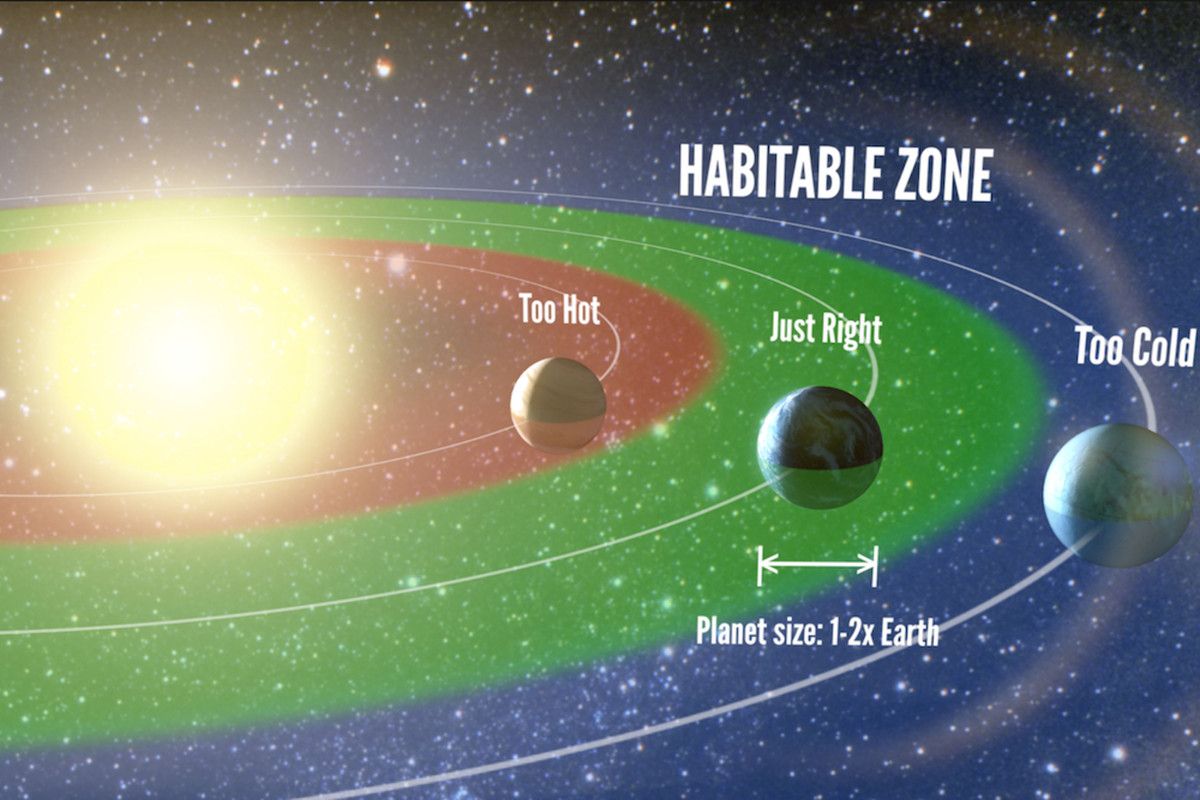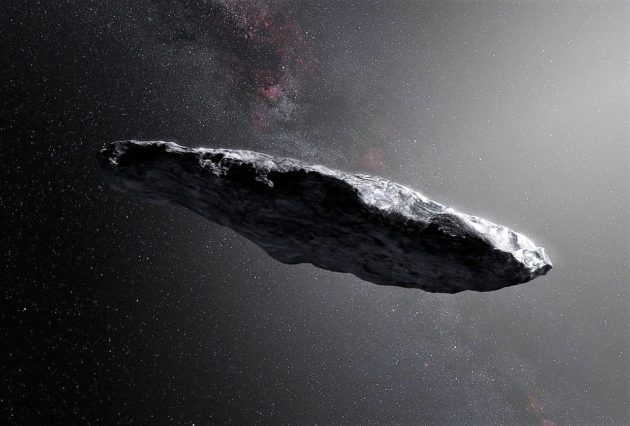by Rebecca Boyle March 7, 2019 (quantamagazine.org)
• The universe is filled with stars, nearly all those stars have planets, and some of those planets are surely livable. So where is everybody? This is the ongoing conundrum that is the Fermi Paradox, first presented by the Italian physicist Enrico Fermi in 1950.
• In 1981, Carl Sagan and William Newman speculated that the answer to the paradox was that intelligent people were simply too far away from us to come here. But they may do so in time. Others reason that tech-savvy civilizations are rare and prone to self-destruction, or are avoiding the Earth on purpose. In 1975, the astrophysicist Michael Hart declared there simply are no other intelligence civilizations in the universe (a hypothesis recently revived by Oxford researcher, Anders Samberg).
• Jonathan Carroll-Nellenback, an astronomer at the University of Rochester, has led another study, now under review by The Astrophysical Journal. Carroll-Nellenback says that it wouldn’t take very long for a space-faring civilization to spread across the galaxy because the movement of stars throughout the galaxy would “… spread life on time scales much shorter than the age of the galaxy” and help distribute life. “The sun has been around the center of the Milky Way 50 times.” According to simulations by Carroll-Nellenback and his colleagues Jason Wright, Adam Frank, and Caleb Scharf, natural variability will mean that sometimes galaxies will be settled, but often not — solving Fermi’s quandary.
• But the fact that no interstellar visitors are here now does not mean they do not exist, the study’s authors say. Civilizations do not last forever. Not every star is a destination, and not every planet is habitable. There’s also what Frank calls “the Aurora effect,” in which settlers arrive at a habitable planet on which they nonetheless cannot survive. When Carroll-Nellenback and his coauthors included these impediments in their model and ran simulations with different star densities, seed civilizations, spacecraft velocities and other variations, they found a vast middle ground between a silent, empty galaxy and one teeming with life. It’s possible that the Milky Way is partially settled, or intermittently so.
• Frank and Wright say that now we need to look for alien signals, which will be possible as more sophisticated telescopes open their eyes to the panoply of exoplanets and begin glimpsing their atmospheres. “We are entering an era when we are going to have actual data relevant to life on other planets,” Frank said. “This couldn’t be more relevant than in the moment we live.”
• [Editor’s Note] The wrangling over Fermi’s Paradox continues among mainstream scientists who are groping for an answer to a flawed premise. When you take the premise that no interstellar beings have ever visited the Earth as “Fact A”, there’s nowhere to go. It becomes a perpetual debate on why there are no beings here besides us. But this is a falsehood from the start. Of course there are extraterrestrial beings all around us. We have real evidence that they have been here for thousands of years, and anecdotal evidence that they have been here for hundreds of millions or even a couple of billion years. This galaxy and the universe are teeming with intelligent life. All of the 52 star systems in our local star cluster have human-like civilizations very similar to our own. We are apparently the last to join this community. It is our time. The problem is that the powers that be, which control the Deep State government and the mainstream science community, have made it a priority to keep Earth humans completely ignorant and unaware of our true reality, often through silly “scientific studies” such as this one.
As far as anyone knows, we have always been alone. It’s just us on this pale blue dot, “home to everyone you love, everyone you know, everyone you ever heard of,” as Carl Sagan so memorably put it. No one has called or dropped by. And yet the universe is filled with stars, nearly all those stars have planets, and some of those planets are surely livable. So where is everybody?
The Italian physicist Enrico Fermi was purportedly the first to pose this question, in 1950, and scientists have offered a bounty of solutions for his eponymous paradox since. One of the most famous came from Sagan himself, with William Newman, who postulated in a 1981 paperthat we just need patience. Nobody has visited because they’re all too far away; it takes time to evolve a species intelligent enough to invent interstellar travel, and time for that species to spread across so many worlds. Nobody is here yet.
Other researchers have argued that extraterrestrial life might rarely become space-faring (just as only one species on Earth ever has). Some argue that tech-savvy species, when they arise, quickly self-destruct. Still others suggest aliens may have visited in the past, or that they’re avoiding us on purpose, having grown intelligent enough to be suspicious of everyone else. Perhaps the most pessimistic answer is a foundational paper from 1975, in which the astrophysicist Michael Hart declared that the only plausible reason nobody has visited is that there really is nobody out there.
Now comes a paper that rebuts Sagan and Newman, as well as Hart, and offers a new solution to the Fermi paradox that avoids speculation about alien psychology or anthropology.
The research, which is under review by The Astrophysical Journal, suggests it wouldn’t take as long as Sagan and Newman thought for a space-faring civilization to planet-hop across the galaxy, because the movements of stars can help distribute life. “The sun has been around the center of the Milky Way 50 times,” said Jonathan Carroll-Nellenback, an astronomer at the University of Rochester, who led the study. “Stellar motions alone would get you the spread of life on time scales much shorter than the age of the galaxy.” Still, although galaxies can become fully settled fairly quickly, the fact of our loneliness is not necessarily paradoxical: According to simulations by Carroll-Nellenback and his colleagues, natural variability will mean that sometimes galaxies will be settled, but often not — solving Fermi’s quandary.
The question of how easy it would be to settle the galaxy has played a central role in attempts to resolve the Fermi paradox. Hart and others calculated that a single space-faring species could populate the galaxy within a few million years, and maybe even as quickly as 650,000 years. Their absence, given the relative ease with which they should spread, means they must not exist, according to Hart.
Sagan and Newman argued it would take longer, in part because long-lived civilizations are likelier to grow more slowly. Faster-growing, rapacious societies might peter out before they could touch all the stars. So maybe there have been a lot of short-lived, fast-growing societies that wink out, or a few long-lived, slowly expanding societies that just haven’t arrived yet, as Jason Wright of Pennsylvania State University, a coauthor of the new study, summarized Sagan and Newman’s argument. But Wright doesn’t agree with either solution.
“That conflates the expansion of the species as a whole with the sustainability of individual settlements,” he said. “Even if it is true for one species, it is not going to be this iron-clad law of xenosociology where if they are expanding, they are necessarily short-lived.” After all, he noted, life on Earth is robust, “and it expands really fast.”
In their new paper, Carroll-Nellenback, Wright and their collaborators Adam Frank of Rochester and Caleb Scharf of Columbia University sought to examine the paradox without making untestable assumptions. They modeled the spread of a “settlement front” across the galaxy, and found that its speed would be strongly affected by the motions of stars, which previous work — including Sagan and Newman’s — treated as static objects. The settlement front could cross the entire galaxy based just on the motions of stars, regardless of the power of propulsion systems. “There is lots of time for exponential growth basically leading to every system being settled,” Carroll-Nellenback said.
READ ENTIRE ARTICLE
FAIR USE NOTICE: This page contains copyrighted material the use of which has not been specifically authorized by the copyright owner. ExoNews.org distributes this material for the purpose of news reporting, educational research, comment and criticism, constituting Fair Use under 17 U.S.C § 107. Please contact the Editor at ExoNews with any copyright issue.


